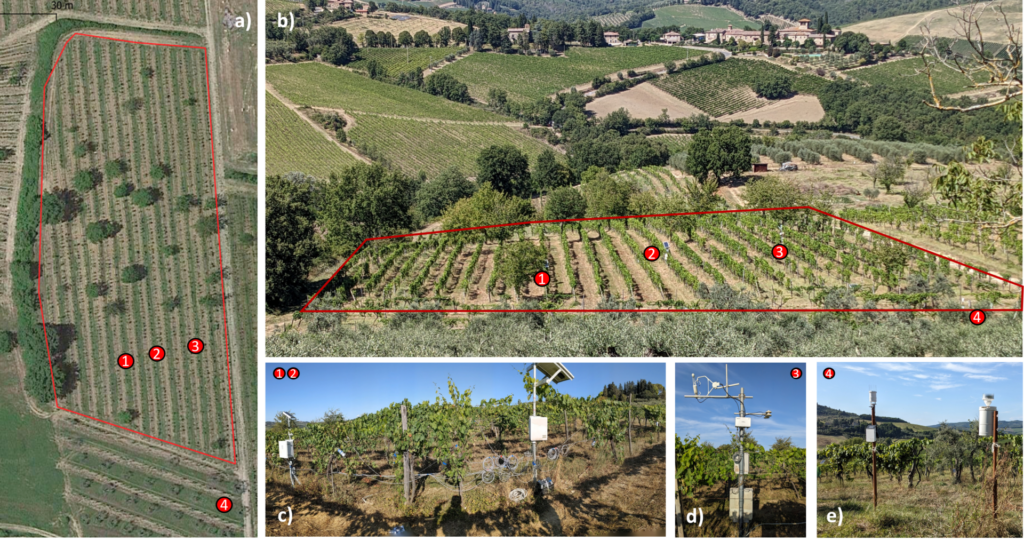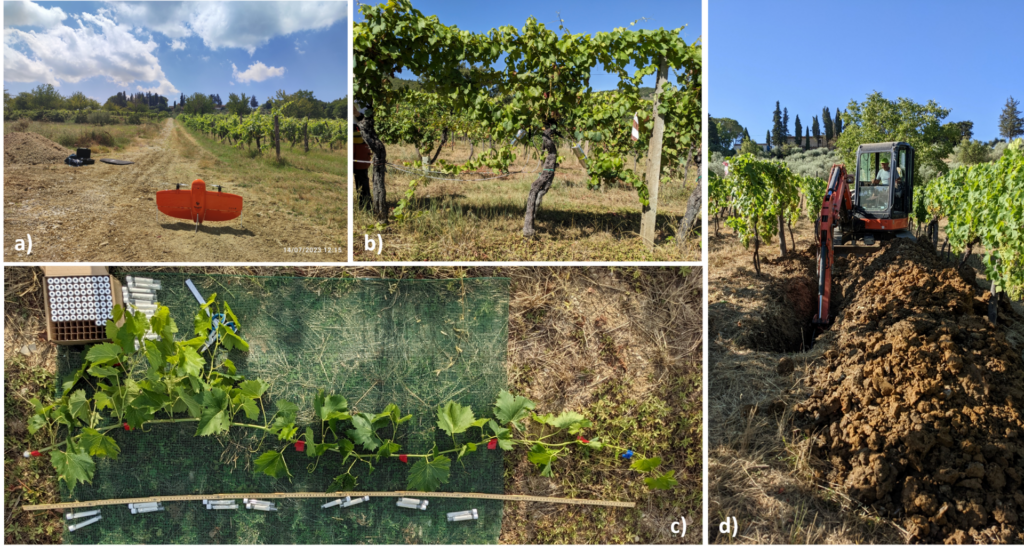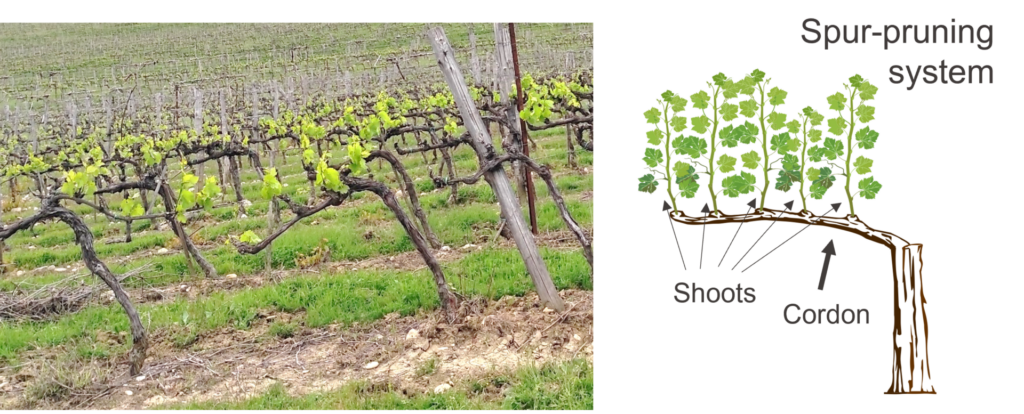We are interested in understanding water circulation in vineyards and quantifying grapevine water sources, especially during periods of stress. We have been working at these sites:
Grignanello (Chianti region, Italy)
Montepaldi (Chianti region, Italy)
Grignanello

The Grignanello experimental vineyard (link Google Map) is a field of 1 hectar in the middle of the Chianti region, Tuscany, Italy. The site is part of the Azienda Agricola Grignanello. The grape vines are mainly the local Sangiovese and Canaiolo varieties. They were planted in 1977 and are characterised by a low density (3000 plant/hectar against the 6000 plants/hectar of typical modern vineyards). No pesticides are used and, following DOC regulation, no irrigation is provided. Climate in the area is Mediterranean, with typically 800 mm of rainfall per year, mainly distributed over the winter season. The vineyard’s slope is mild (<5%). The soil has a large percentage of clay.
The instrumentation includes (see Figure 1): 2 networks of soil moisture, soil tension and sapflow sensors; an Eddy Covariance Tower; a Weather station with precipitation collector; 2 time-lapse cameras for the daily evolution of the vineyard. Thermal and multispectral images have been collected through drone flights. Samples of precipitation, bulk soil and plant material have been samples since July 2022 for water isotope analysis.

Partners and collaborators
- Paolo Benettin, University of Lausanne, Switzerland
- Azienda Agricola Grignanello, Italy
- Francesca Manca di Villahermosa, EPFL, Switzerland
- Daniele Penna, University of Florence, Italy
- Francesca Giannetti, University of Florence, Italy
- Christian Massari, CNR-IRPI, Italy
- Lorenzo Brilli, CNR-IBE, Italy
Research in Grignanello is financed by the Swiss NSF (project IZCOZ0_205439 / 1) as part of the COST Action WATSON. Internal support by the different partners is also acknowledged.
Montepaldi
The Montepaldi vineyard (link Google Map) belongs to the University of Florence, Italy and is located in the Chianti wine region. The 12-year-old grapevines mainly comprise the local Sangiovese. The experimental vineyard is 2.3 ha with elevations in the range 109-146 m asl. Climate in the area is Mediterranean, with a long-term mean of 822 mm of rainfall mainly distributed over the winter season and an annual mean temperature of 13.7° C.

Partners and collaborators
- Daniele Penna, University of Florence, Italy
- Paolo Benettin, University of Lausanne, Switzerland
- Massimo Tagliavini, University of Bozen-Bolzano, Italy
- Carlo Andreotti, University of Bozen-Bolzano, Italy
Research in Montepaldi has been financed by: Fondazione Ente Cassa di Risparmio di Firenze project TRACQUA (2017.0791) and the Swiss NSF (project IZCOZ0_205439 / 1).